AI Innovation Patents
Insights by Dr. Rahul Dev
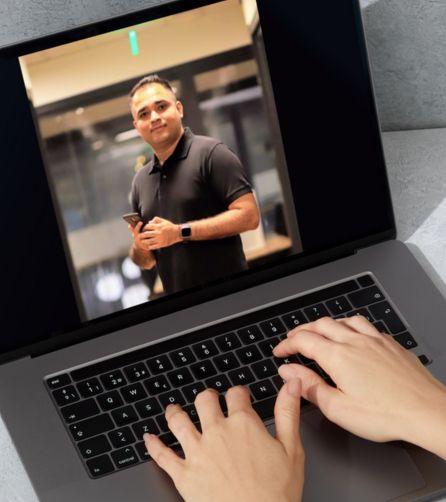
Understand Practical Aspects
Understand the process of patenting AI inventions
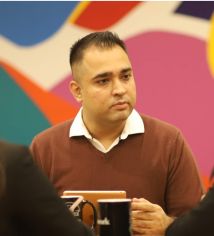
Insights by Dr. Rahul Dev

Understand the process of patenting AI inventions

Protect your innovations across multiple countries and create strong patent portfolio to boost business valuation
Local and global brand protection through international trademark registrations
Extensive research and business writing for technical whitepapers and B2B content products
A detailed article discussing how to develop international patent filing strategy for AI interface detection patents and create a AI patent portfolio. In 2025, AI detection patents win global markets and this guide shows how. International patent filing for AI interface detection patents represents a critical strategic decision that can determine global market success or failure. The global patent landscape reveals compelling evidence for international protection: China leads with 38,210 generative AI patent filings from 2014-2023, yet only 7% of Chinese AI patents have been filed overseas. Japan filed 26,400 AI patent applications in 2024, ranking third globally after the U.S. and China. This geographic concentration creates both opportunities and risks for inventors seeking worldwide protection of their AI innovations.
AI interface detection technologies serve inherently global markets through cloud-based software platforms, mobile applications, and enterprise automation systems. Major tech companies including IBM (1,211 U.S. AI patents in 2023), Google, Microsoft, and Amazon compete internationally for patent protection. Specialized RPA companies like UiPath and Automation Anywhere demonstrate how strategic international filing builds valuable patent portfolios supporting global business expansion. The choice between domestic and international patent protection determines whether inventors capture worldwide value or surrender markets to competitors.
This article covers following topics:
Advantages of International Patent Filing
PCT International Patent Filing Process for AI Inventions
International Patent Filing Documentation for AI Inventions
AI Patent Claim Drafting for International Patent Filing
Licensing of AI Inventions After International Patent Filing
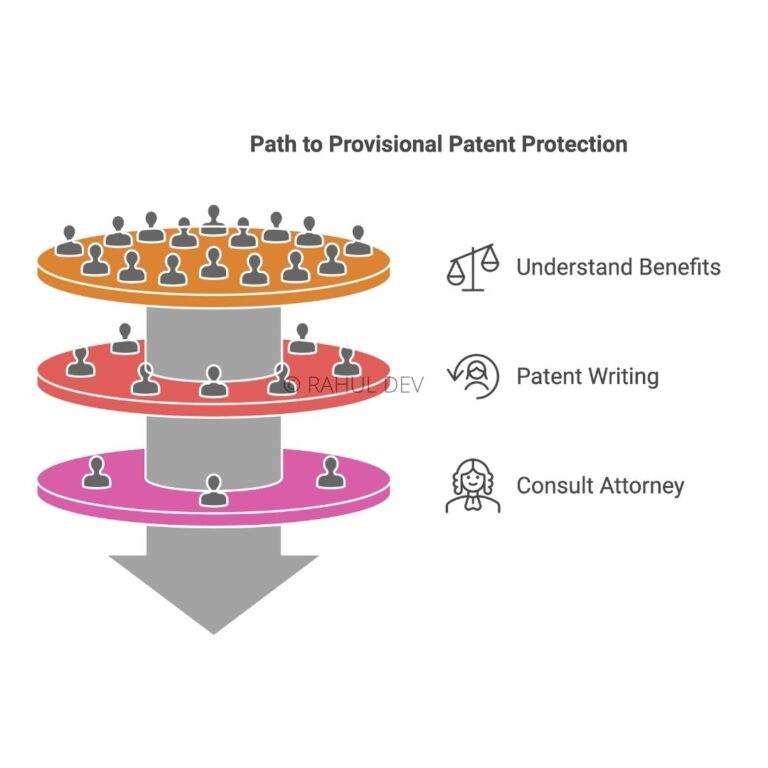
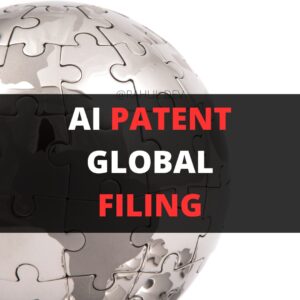
International patent protection provides comprehensive market coverage that single-country filings cannot achieve. Global software distribution increasingly operates across multiple jurisdictions simultaneously, with AI interface detection systems serving users in dozens of countries through cloud platforms. Amazon’s patent US11,221,833 for automated GUI object detection demonstrates this reality as the technology applies universally to software interfaces regardless of geographic location.
Competitive blocking strategies require international scope to prevent circumvention. Chinese tech giants like Baidu and Tencent compete directly with Western companies in AI development, while only 7% of their patents receive international filing. This gap creates strategic opportunities for Western inventors to secure strong international positions before Chinese competitors expand globally. European markets offer particularly attractive opportunities given the unified patent system and strong enforcement mechanisms.
Revenue diversification through international protection reduces dependence on single markets. Software licensing revenue flows globally, with major technology companies generating substantial income from international patent portfolios. Cross-licensing negotiations require comprehensive patent coverage to achieve favorable terms with multinational corporations. Acquisition valuations increasingly reflect international patent portfolio strength, as acquiring companies seek global freedom to operate.
The patent enforcement advantages multiply with international coverage. Patent litigation in the United States provides broad remedies but limited geographic scope. European patent enforcement covers multiple countries simultaneously through unified proceedings. Chinese patent enforcement has strengthened significantly, providing credible protection for international patent holders. Combination strategies using patents across multiple jurisdictions create powerful deterrence against infringement.
The risk mitigation through geographic diversification protects against jurisdiction-specific challenges. Section 101 rejections in the United States may not affect patents in Europe or China where different patent eligibility standards for AI inventions apply. Political or regulatory changes in single countries cannot eliminate globally distributed patent protection. Currency fluctuations and economic disruptions affect different regions differently, making international portfolios more stable investments.
Patent Cooperation Treaty (PCT) filing provides streamlined access to approximately 153 countries through a single international application. AI interface detection inventions benefit particularly from PCT processing because International Search Authorities (ISAs) conduct thorough prior art searches across global databases. European Patent Office ISA services often provide superior search quality for software-related inventions compared to other search authorities.
The PCT timeline advantages allow 30 months from priority date to make national phase entry decisions. AI technology development cycles often require 18-24 months to achieve commercial validation, making PCT timing ideal for business development coordination. Venture capital funding frequently aligns with PCT national phase decisions, allowing companies to secure financing before committing to expensive national filings.
The International Search Reports (ISR) provide early patentability assessment from experienced examiners. AI patent applications face complex prior art landscapes spanning multiple technical domains including machine learning, computer vision, and user interface design. ISR analysis identifies relevant prior art combinations that might not emerge in single-country searches, enabling applicants to strengthen applications before national phase prosecution.
The Written Opinion of the ISA offers preliminary patentability assessment under international standards. AI interface detection claims often trigger abstract idea concerns in the United States while receiving favorable analysis from European examiners applying different legal standards. Multiple perspectives from different search authorities provide comprehensive evaluation of patent prospects across jurisdictions.
The PCT publication at 18 months establishes public disclosure and priority rights internationally. Competitive intelligence benefits from early publication, allowing companies to monitor competitor filings and adjust development strategies accordingly. Prior art establishment through PCT publication creates obstacles for competitors filing similar applications in any PCT member country.
The National phase flexibility enables strategic jurisdiction selection based on business development progress. Market validation during the PCT phase may indicate certain countries deserve priority investment while others can be abandoned. Budget allocation becomes more predictable as commercial prospects clarify during PCT examination.
Technical specifications for international filing must satisfy diverse disclosure requirements across multiple jurisdictions. European Patent Office demands detailed problem-solution statements explicitly connecting AI algorithms to technical improvements. Chinese CNIPA requires clear demonstration of technical means utilizing natural laws to solve concrete problems. Japanese JPO expects comprehensive implementation details supporting broad claim scope.
The Algorithm descriptions require careful balance between enabling disclosure and trade secret protection. Neural network architectures should be described functionally rather than revealing proprietary training datasets or optimization techniques. Automation Anywhere’s patent US11,886,892 demonstrates effective disclosure through pixel-vicinity filtering techniques without exposing complete algorithmic implementations. Training methodologies can be described generally while maintaining competitive advantages.
The Implementation examples strengthen applications across all major jurisdictions. Concrete use cases showing AI interface detection applied to specific technical problems satisfy European technical character requirements. System integration details including hardware components and software architectures address Chinese technical solution standards. Performance metrics demonstrating measurable improvements support patentability arguments globally.
The patent drawing requirements vary significantly between jurisdictions but benefit from comprehensive visual documentation. Flowcharts illustrating AI processing pipelines satisfy disclosure requirements while supporting claim interpretation. System diagrams showing hardware and software integration provide technical context for abstract algorithms. User interface screenshots with detection annotations demonstrate practical applications of the technology.
The translation considerations affect long-term patent portfolio management. Technical terminology consistency across multiple languages prevents claim interpretation disputes during prosecution or enforcement. Cultural adaptation of examples and use cases improves examiner understanding in different regions. Professional translation services specializing in AI patents ensure technical accuracy across language barriers.
The patent priority document management becomes complex with international filing but remains critical for patent family coordination. Unity of invention requirements may force divisional applications in different countries at different times. Claim dependency structures require careful planning to maintain consistent protection scope across jurisdictions despite varying prosecution outcomes.
The multi-jurisdictional claim architecture requires sophisticated understanding of different patent law frameworks. United States practice favors broad functional claiming with technical improvement emphasis to satisfy Section 101 requirements. European practice demands specific technical implementation details and clear problem-solution statements. Chinese practice requires explicit technical means and technical effects utilizing natural laws.
The independent claim strategies must balance breadth with patentability across diverse legal standards. AI interface detection inventions typically require system claims covering hardware components, method claims covering processing steps, and computer-readable medium claims covering software implementations. Amazon’s successful patent US11,221,833 demonstrates effective claim architecture combining image analysis, component identification, and code generation into unified protection.
The technical limitation integration provides universal patentability support. Specific processor configurations anchor abstract algorithms in concrete hardware implementations satisfying all major jurisdictions. Sensor integration requirements provide technical character while enabling broad claim scope. Memory architecture specifications demonstrate technical improvement through efficient resource utilization.
The dependent claim hierarchies create fallback positions for jurisdiction-specific prosecution challenges. Algorithm-specific limitations provide narrow protection if broad claims face obviousness rejections. Hardware integration alternatives accommodate different technical approaches while maintaining patent protection. Performance threshold specifications enable precise claim scope definition during prosecution.
The abstract idea avoidance requires proactive claim drafting addressing known rejection patterns. Technical improvement language replaces user experience terminology with measurable system enhancements. Concrete implementation details prevent abstract characterization during examination. Real-world application emphasis demonstrates practical utility beyond theoretical algorithmic advances.
The obviousness differentiation through claim construction prevents common rejection grounds. Unexpected results language highlights technical advantages over prior art combinations. Synergistic element interactions demonstrate non-obvious technical relationships between claimed components. Problem-solution correspondence shows inventive step through specific technical approaches to identified problems.
The global licensing strategies leverage international patent portfolios to generate revenue across multiple markets simultaneously. AI interface detection patents create valuable licensing opportunities with software companies, automation providers, and enterprise technology vendors. Cross-licensing negotiations with major technology companies require comprehensive international coverage to achieve favorable terms and avoid patent thickets.
The geographic licensing structures enable market-specific agreements tailored to local business conditions. European licensing deals often emphasize technical standards compliance and interoperability requirements. Asian licensing arrangements frequently involve manufacturing partnerships and technology transfer agreements. North American licensing typically focuses on software distribution rights and end-user applications.
The patent portfolio valuation increases significantly with international coverage breadth and quality. IBM’s 1,211 U.S. AI patents in 2023 demonstrate how comprehensive patent portfolios create substantial licensing revenue streams. Startup acquisition valuations reflect international patent protection strength, with acquirers paying premiums for global freedom to operate. Patent litigation outcomes provide higher damage awards when international sales are covered by patent protection.
The standard essential patent (SEP) opportunities emerge as AI interface detection technologies become incorporated into industry standards. International standards organizations require FRAND licensing terms for essential patents, creating predictable revenue streams across global markets. Patent pool participation enables collective licensing arrangements benefiting patent holders and implementers simultaneously.
The patent enforcement coordination across multiple jurisdictions maximizes licensing leverage and deterrence effects. Parallel litigation strategies in the United States and Europe create comprehensive pressure on infringers. Preliminary injunction availability varies by jurisdiction but provides powerful negotiation tools when coordinated internationally. Damages calculation methodologies differ between countries but aggregate to substantial total exposure for international infringers.
The technology transfer agreements benefit from international patent protection through enhanced negotiating positions and broader market coverage. Joint development partnerships require mutual patent licensing arrangements covering all relevant jurisdictions. University technology transfer increasingly demands international patent filing to maximize commercial value from research investments. Government funding requirements often mandate international patent protection to ensure public benefit from taxpayer-supported research.
The strategic imperative for international patent filing grows stronger as AI interface detection technologies achieve global adoption. Market opportunities span continents through cloud computing platforms and mobile applications. Competitive threats emerge from international sources requiring comprehensive patent protection. Revenue potential multiplies through geographic diversification and cross-licensing arrangements. Companies investing in international patent strategies position themselves advantageously in the accelerating global competition for AI interface detection market leadership.
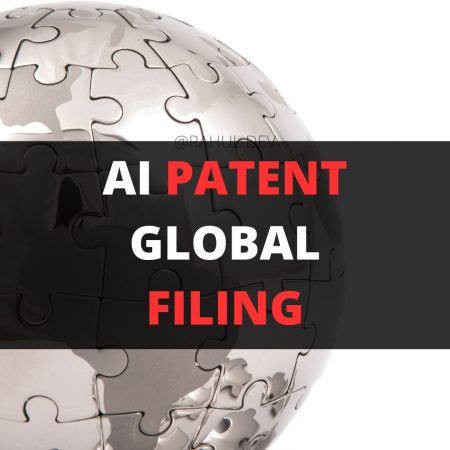
As a business coach and thought leader, I cannot emphasize enough the importance of innovation, new software patents, mobile apps, and patents for tech companies, startups, and entrepreneurs. The world is rapidly evolving, and staying ahead of the curve is vital for success. Embracing technological advancements such as blockchain and AI can unlock unprecedented opportunities, streamline operations, and propel businesses into the future with competitive valuation via intangible assets.
Click Here for AI Startup Valuation Guide.
For instance, blockchain technology can revolutionize supply chain management and secure data sharing wherein innovative business models are explained to the audience via technical whitepapers, while AI can automate and optimize decision-making processes. Mobile apps are no longer just a luxury; they have become essential tools for engaging customers and offering personalized experiences. Furthermore, securing digital innovation patents is crucial for protecting intellectual property, fostering innovation, and maintaining a competitive edge. By investing in these areas, businesses can position themselves as industry pioneers and pave the way for a prosperous future after thoroughly conducting the due diligence and reviewing the legal opinion letters, which in case of digital assets can assist in determining the tokens as utility assets or coins as utility tokens before listing the assets at an exchange.
Our team of advanced patent attorneys assists clients with patent searches, drafting patent applications, and patent (intellectual property) agreements, including licensing and non-disclosure agreements. Advocate Rahul Dev is a Patent Attorney & International Business Lawyer practicing Technology, Intellectual Property & Corporate Laws. He is reachable at rd (at) patentbusinesslawyer (dot) com & @rdpatentlawyer on Twitter.
Quoted in and contributed to 50+ national & international publications (Bloomberg, FirstPost, SwissInfo, Outlook Money, Yahoo News, Times of India, Economic Times, Business Standard, Quartz, Global Legal Post, International Bar Association, LawAsia, BioSpectrum Asia, Digital News Asia, e27, Leaders Speak, Entrepreneur India, VCCircle, AutoTech).
Regularly invited to speak at international & national platforms (conferences, TV channels, seminars, corporate trainings, government workshops) on technology, patents, business strategy, legal developments, leadership & management.
Working closely with patent attorneys along with international law firms with significant experience with lawyers in Asia Pacific providing services to clients in US and Europe. Flagship services include international patent and trademark filings, patent services in India and global patent consulting services.
Global Blockchain Lawyers (www.GlobalBlockchainLawyers.com) is a digital platform to discuss legal issues, latest technology and legal developments, and applicable laws in the dynamic field of Digital Currency, Blockchain, Bitcoin, Cryptocurrency and raising capital through the sale of tokens or coins (ICO or Initial Coin Offerings).
Blockchain ecosystem in India is evolving at a rapid pace and a proactive legal approach is required by blockchain lawyers in India to understand the complex nature of applicable laws and regulations.